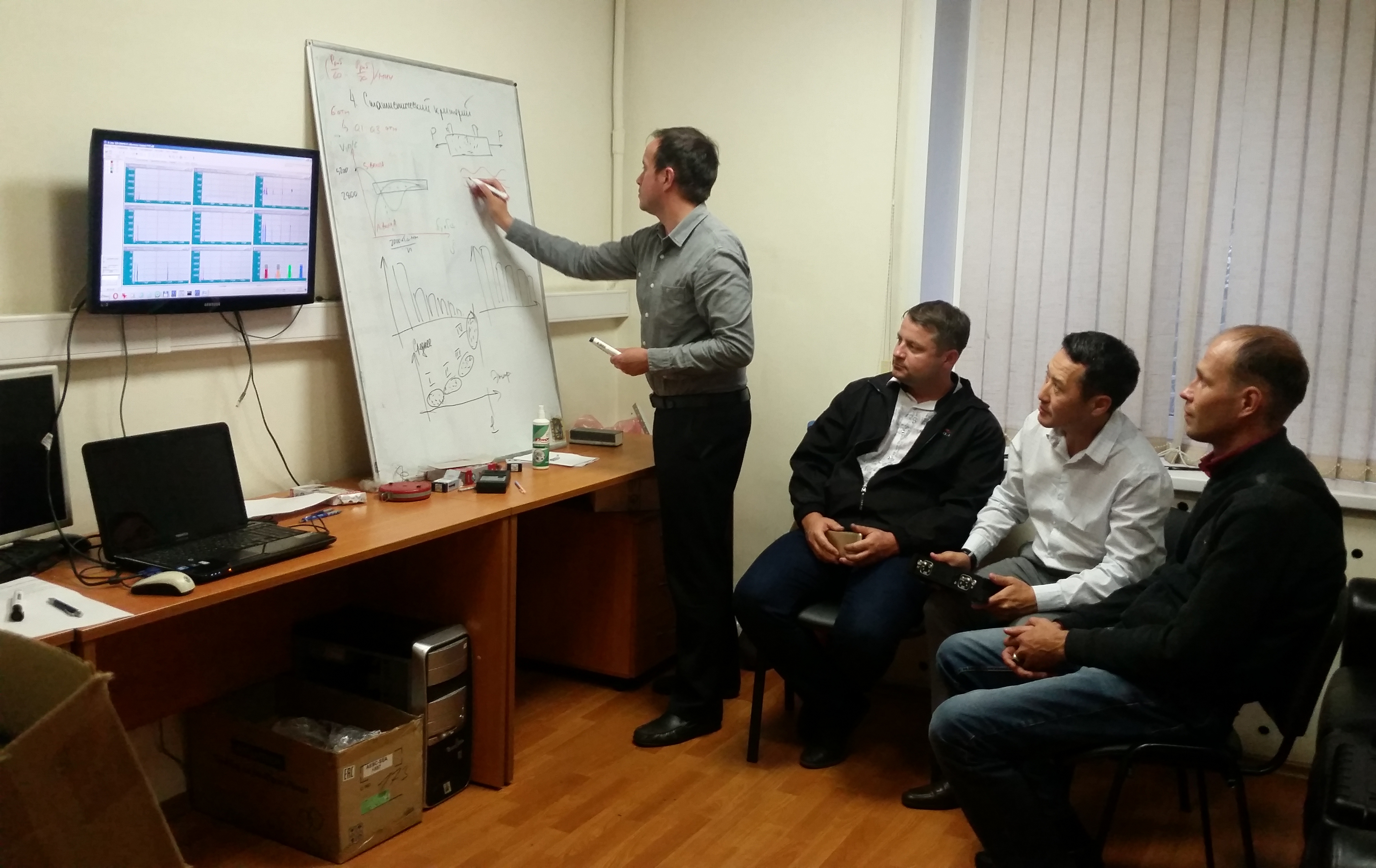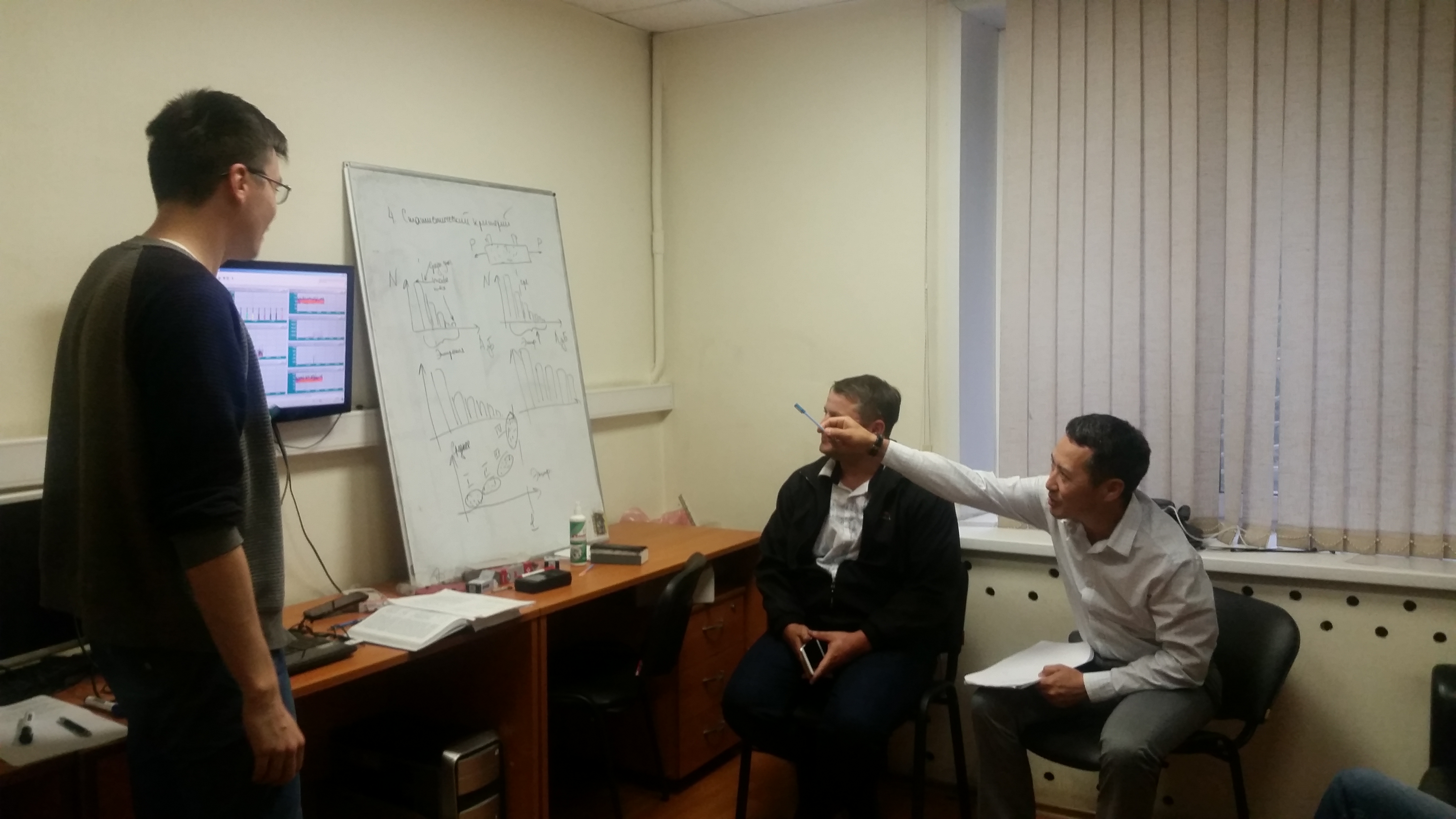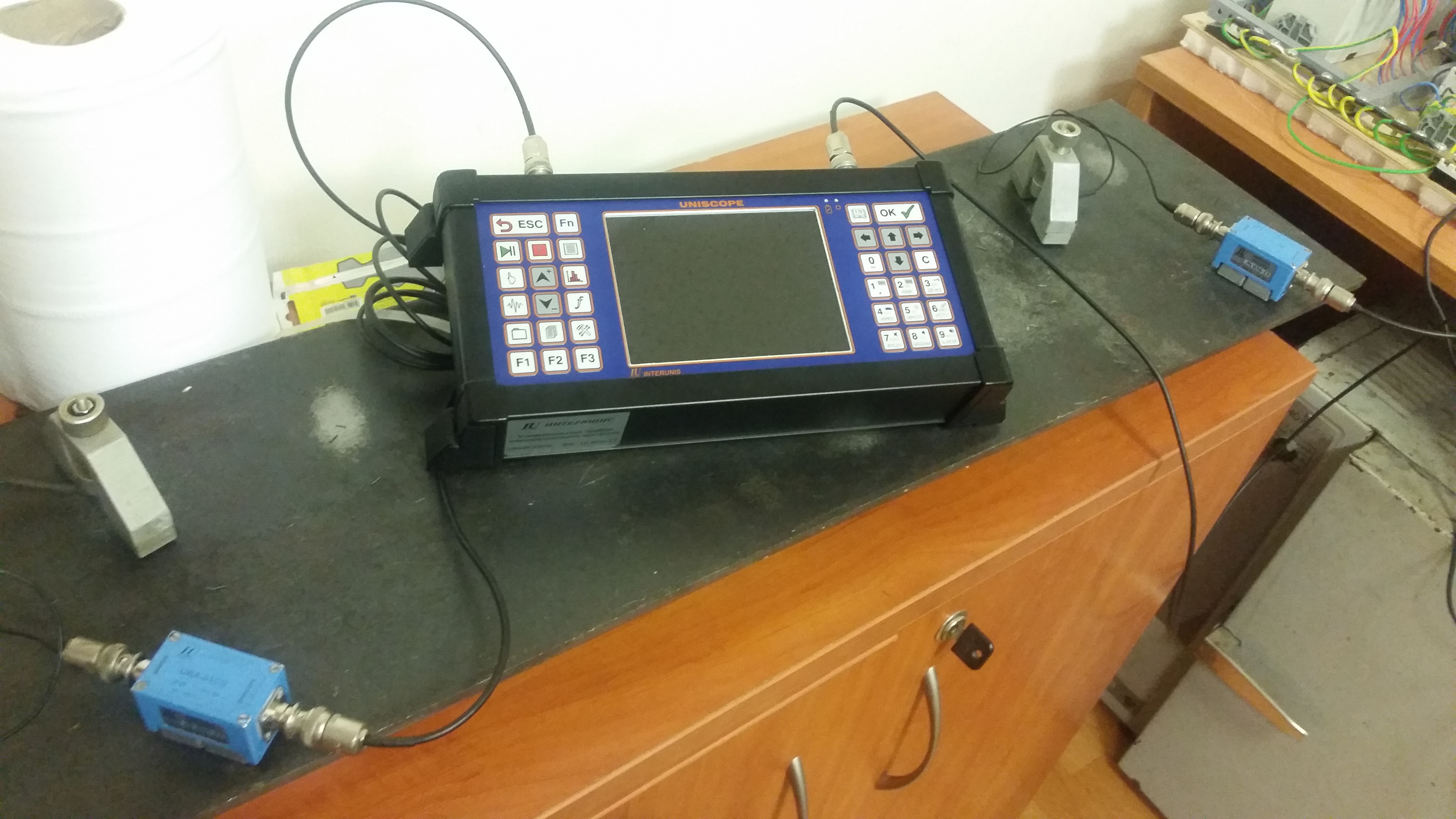-
Training
Our company provides training for the customer's specialists on the A-Line acoustic emission (AE) systems and UNISCOPE universal non-destructive testing devices with the issuance of certificate. The course consists of an introductory theoretical part on the fundamentals of the AE method and a practical lesson on the model tested object in the office.

Training is carried out by the staff of the research department, authors of modern teaching aids, scientific articles and the latest methodological developments in the field of AE, specialists with rich experience in teaching, who know all the subtleties of the practical application of our products. The course is designed for a period of 2 to 3 working days, depending on the size of the group and the level of training of students. For the company's clients, the training is free of charge.

In addition, we offer our customers specialized scientific, training and reference materials, methodological recommendations on AE testing and services for certification of specialists in partner companies: LLC "NUTS Quality" and NCC "Control and Diagnostics".
We also widely practice demonstration demonstrations of equipment and training specialists with a visit to the customer's site, master classes and presentations at profile exhibitions and conferences.

-
Consultations
Employees of INTERUNIS-IT consult on the choice of equipment, the selection of the optimal configuration of AE systems and sensors. And also assist in all aspects of the acoustic emission method. They can help to formulate a testing procedure taking into account all the features of the facility, consult on the issues of data filtering, theory and practice of application of the AE method.
Possible forms of cooperation:
- demonstration of equipment operation in field or factory conditions;
- matching of types of acoustic emission sensors and the way of their arrangement;
- carrying out calibration measurements and setting up a data acquisition system;
- the development of a test program for the tested object;
- expert data processing, noise filtering, identification of AE sources.
Our company provides training for the customer's specialists on the A-Line acoustic emission (AE) systems and UNISCOPE universal non-destructive testing devices with the issuance of certificate. The course consists of an introductory theoretical part on the fundamentals of the AE method and a practical lesson on the model tested object in the office.

Training is carried out by the staff of the research department, authors of modern teaching aids, scientific articles and the latest methodological developments in the field of AE, specialists with rich experience in teaching, who know all the subtleties of the practical application of our products. The course is designed for a period of 2 to 3 working days, depending on the size of the group and the level of training of students. For the company's clients, the training is free of charge.

In addition, we offer our customers specialized scientific, training and reference materials, methodological recommendations on AE testing and services for certification of specialists in partner companies: LLC "NUTS Quality" and NCC "Control and Diagnostics".
We also widely practice demonstration demonstrations of equipment and training specialists with a visit to the customer's site, master classes and presentations at profile exhibitions and conferences.

Employees of INTERUNIS-IT consult on the choice of equipment, the selection of the optimal configuration of AE systems and sensors. And also assist in all aspects of the acoustic emission method. They can help to formulate a testing procedure taking into account all the features of the facility, consult on the issues of data filtering, theory and practice of application of the AE method.
Possible forms of cooperation:
- demonstration of equipment operation in field or factory conditions;
- matching of types of acoustic emission sensors and the way of their arrangement;
- carrying out calibration measurements and setting up a data acquisition system;
- the development of a test program for the tested object;
- expert data processing, noise filtering, identification of AE sources.



